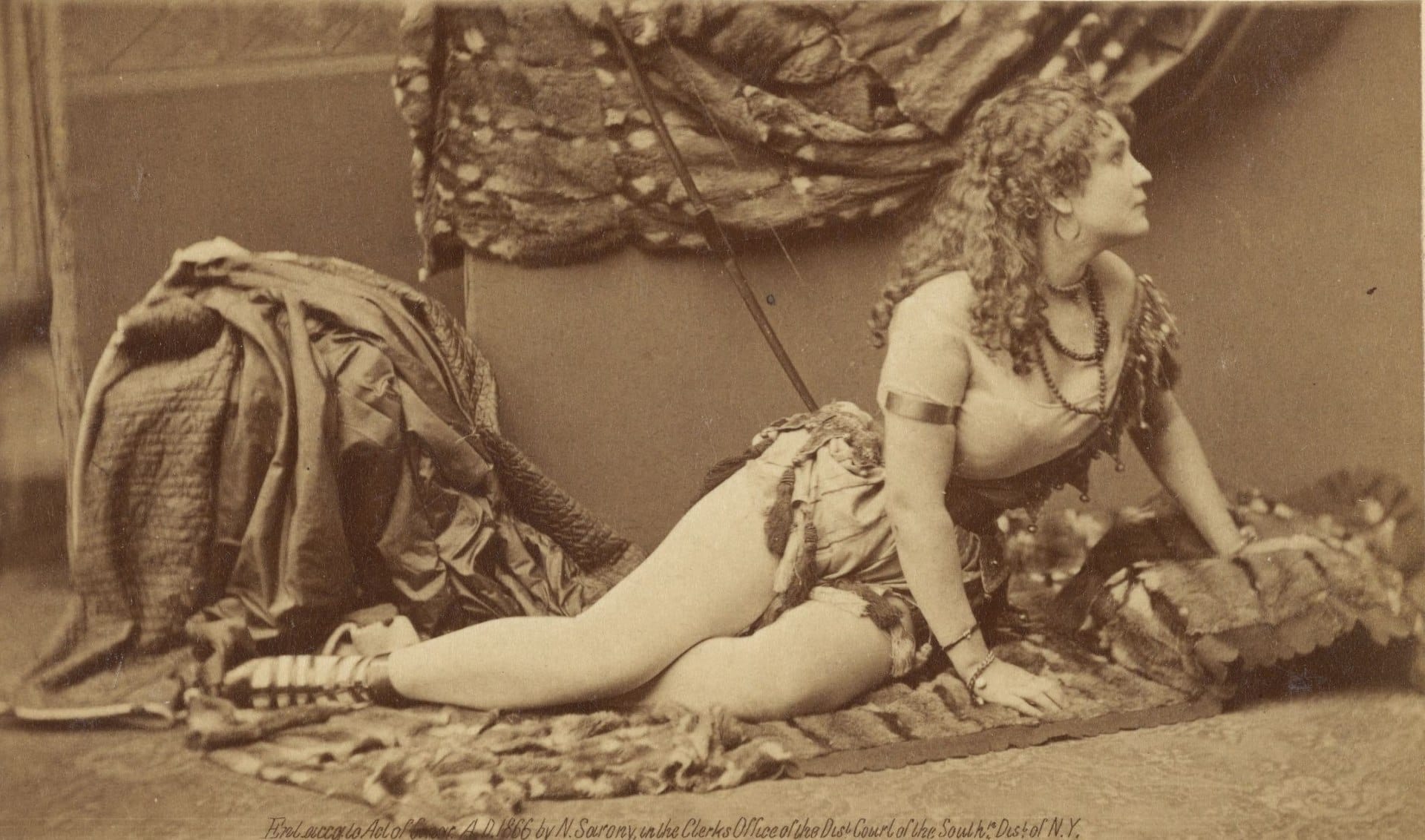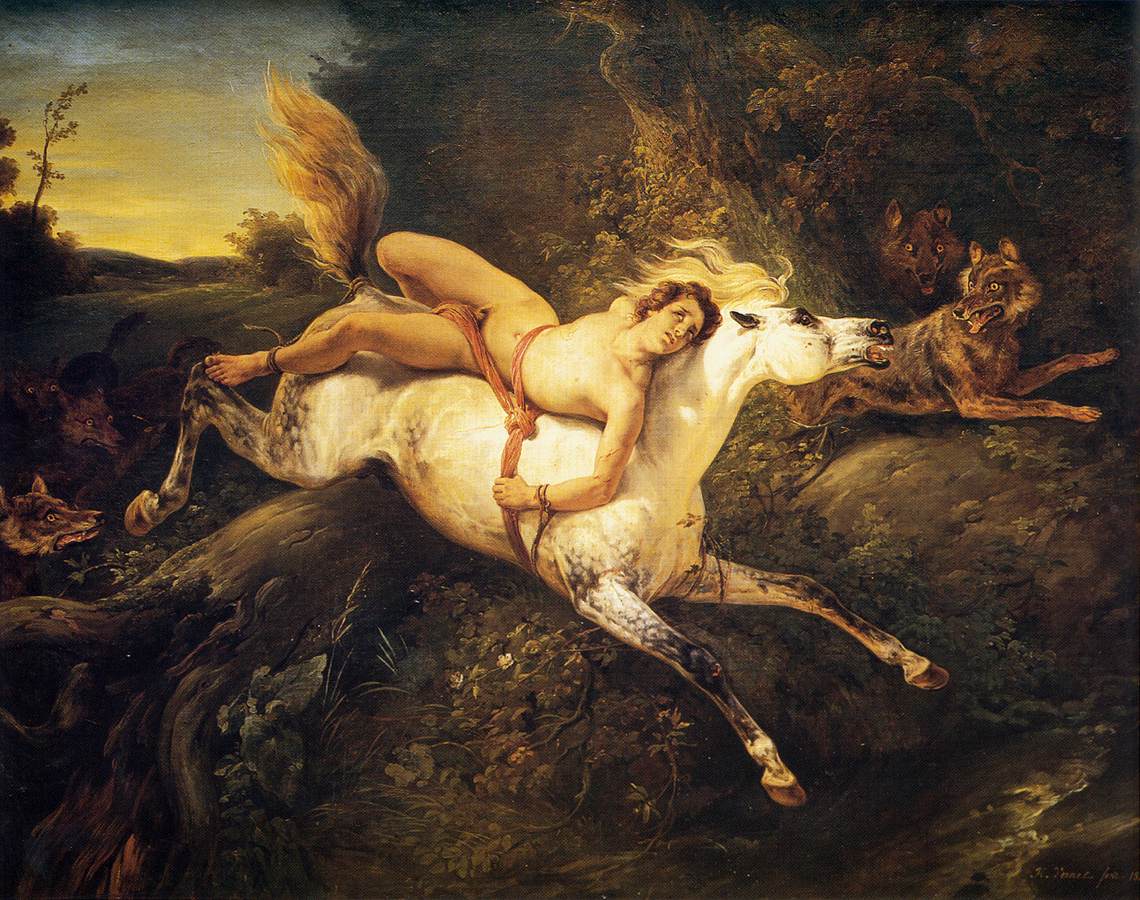'Mazeppa'

Wild and wonderful women... Mazeppa began its career as an epic poem by Byron in 1819, based on existing legends, the story of a page caught in an affair with a married woman from a higher class. When the affair is discovered, the outraged husband has him tied to the back of a wild horse which is set loose, the intent being to kill him. He survives, of course, and Romantic artists and performers picked it up from there.
One of those performers was the American Adah Isaacs Menken, seen in this publicity shot for Mazeppa in 1866. There are many less flattering shots, including semi-nudes, and it is said that in the finale she rode her horse in the nude.

Born in New Orleans in 1835 and dead by 1868, Menken managed to scandalize America with her Lady Godiva-like stage performances in Mazeppa, her multiple marriages (four in seven years), her short cropped hair and her cigarettes. She converted to Judaism with her short-lived first marriage and remained committed to it throughout her life.
In the 1860’s she took Mazeppa to Paris and London (and was there feted by Rossetti, Dickens and others and affairs with Dumas pére and Swinburne). She died unnoticed in Paris at the age of 33 and was buried in the Jewish cemetery in Montparnasse, attributed to peritonitis, tuberculosis or cancer, but we don't really know. Yet, it has been said that Mazeppa remained the most widely performed drama in the American West from the 1860s until the end of the century. She left a mark.
Byron's poem captured the imagination of European painters, writers and musicians. Among painters, Gericault in 1823 and Delacroix in 1824, both of whom presumably identified with Mazeppa, and, perhaps most famously, Emile Jean Horace Vernet, one of whose versions is below. Among writers and musicians, Pushkin in 1829, Liszt repeatedly, and Tchaikovsky in 1884, among others.

Another American circus stunt performer of interest was Leona Dare, who in the 1870's and 1880's was known for hanging suspended under a hot air balloon, doing her acrobatics hundreds of feet in the air.
